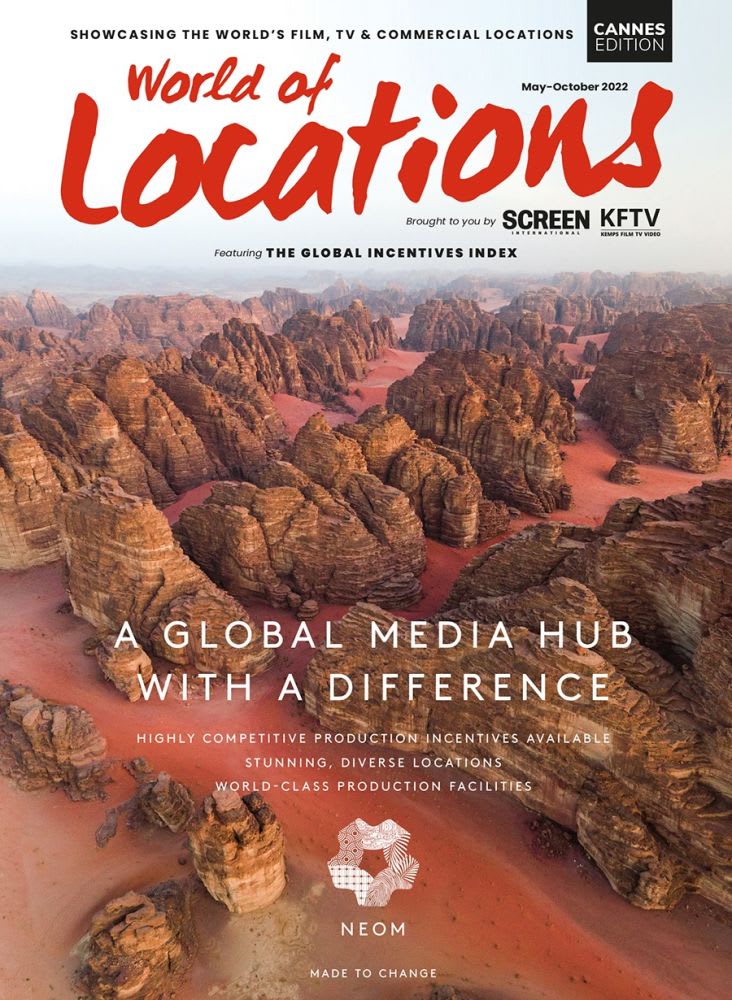Cannes Case Study: EO producer on the challenges of filming in Poland and Italy
Jerzy Skolimowski, producer of Cannes competition entry EO, reveals to World of Locations how he made shoot challenges work to the film's advantage
By Geoffrey Macnab 16 May 2022

Jerzy Skolimowski’s Competition title EO shot on location throughout Poland and in Italy.
Sharing insights about the shoot, the director-producer tells KFTV about travelling with a large crew through small towns, overcoming challenges and the unprecedented access to a royal residence just outside Warsaw.
In a wide-ranging career, Polish director Skolimowski has made films about boxing (his early masterpiece Walkover), extraordinary rendition (Essential Killing) and Solidarity-era Polish builders working illegally in London (Moonlighting). Now, with his latest feature EO, screening in Cannes’ Competition section, his focus is on a donkey. EO tells the story of a creature that starts its life in the Polish circus but ends up in an Italian slaughterhouse. It is a contemporary take on Robert Bresson’s Au Hasard Balthazar (1966), which used the life of a donkey and its various owners to illuminate the highs and lows of human nature.
EO was produced by co-writer Ewa Piaskowska of Warsaw-based Skopia Film, alongside Skolimowski, with Italy’s Alia Film as co-producer. Experienced UK producer Jeremy Thomas is the executive producer through his Recorded Picture Company, with HanWay Films handling sales. Isabelle Huppert joins a majority Polish cast led by Sandra Drzymalska, Mateusz Kosciukiewicz and Tomasz Organek.
Crewing up
Several key crew had worked before with Skolimowski, among them composer Pawel Mykietyn, editor Agnieszka Glinska and sound designer Radek Ochnio. “The rest of the crew was new and mostly very young and a source of positive energy on set,” says Piaskowska.
EO is a Poland-Italy co-production, with support from the Polish Film Institute, including its cash rebate incentive. On the Polish side, two regional funds were on board: Podkarpacki Regionalny Fundusz Filmowy and Warminsko-Mazurski Fundusz Filmowy, as well as Strefa Kultury — the cultural institution of the city of Wroclaw. The filmmakers also secured financing from Polish equity investors and from HBO Europe.
EO’s focus is very much on the long-suffering animal. “This is essentially a road movie with a donkey playing the lead, so the film was almost entirely shot on location,” Piaskowska explains.
The Polish portion was sandwiched by a few days in Sicily and Rome. EO’s first shooting day, albeit with a minimal crew, took place in the town of Custonaci in Sicily in early 2020, just before the Covid pandemic closed down the world. These scenes appear in the finished film as flashbacks.
The last shooting day took place on the outskirts of Rome in early March 2022. “A long timeframe, indeed,” the producer reflects. “In between, the world became a wholly different place.”
Skolimowski’s travels with his donkey took him all over Poland. “We were privileged to capture the stunning wild nature of Podkarpackie, the sleeping beauty of a small town in Mazury, as well as one of its historic stables,” says Piaskowska of the various stops along the way. “We were also able to place a camera inside a royal residence just outside Warsaw, [in] the magnificent Wilanow Palace. This was unprecedented.’
Passing through small or far-flung locations with a large filmmaking team was not without its difficulties. “Limited hotel capacity was perhaps most problematic when lodging the crew in remote Polish towns,” says Piaskowska. “As to the challenges, there were quite a few. But Jerzy has always had an amazing quality of not only surmounting them, but somehow being able to make them work to the film’s advantage.”
One example involved the lead mare. One of the original animals chosen for the role turned out to lack a vital vaccination certificate just two days before filming in the stables. Within a day, Skolimowski had managed to call in a replacement, a beautiful white Arab horse from the eastern Polish town of Janow Podlaski.
The filmmakers went out of their way to make their collaboration with the animals on set as humane and stress-free as possible.
“There was more than one donkey on set, of course,” says Piaskowska. “We worked with Marietta, Taco, Holla, Hettore, Rocco and Maya. None disappointed us in any way. All were patient, tactful and considerate. Stubborn, sometimes — always for a reason. Quite a few members of our Polish crew decided to stop eating meat during the making of this film.”
This article appears in our latest issue of World of Locations, which you can read below…
Latest news & features
Featured profiles
Promote your services with KFTV
Choose from three profile types - Basic, Silver and Gold
Create ProfileWe offer a range of display advertising opportunities.
Learn More



